I am, therefore I play!

Playing is fun.
Fun is important.
These are things I learned early in life. And like most things we pick up early, I learned them at home. Which I know may seem like a pretty unusual place to learn about the importance of having fun.
When my father was a boy, he and his brothers coaxed a cow from the pasture into  the house—and up the stairs to the second floor, just to see if they could do it. AND because they thought it would be fun. At least that’s how the story went every time Daddy told it, and believe me, he told it dozens of times. Many years later in a house of his own, and with no livestock of the bovine kind readily available, he enticed a semi-willing, fairly gullible squirrel into our back hall and up the stairs, for what must have been the exact same reasons. Why else would he do it? And to the delight of my brother, sister and I, that little fluffy tailed rodent stopped
the house—and up the stairs to the second floor, just to see if they could do it. AND because they thought it would be fun. At least that’s how the story went every time Daddy told it, and believe me, he told it dozens of times. Many years later in a house of his own, and with no livestock of the bovine kind readily available, he enticed a semi-willing, fairly gullible squirrel into our back hall and up the stairs, for what must have been the exact same reasons. Why else would he do it? And to the delight of my brother, sister and I, that little fluffy tailed rodent stopped by often for a visit and a treat (peanuts in the shell). We named him Tony. And sometimes he brought a friend along. Tony (and his descendants) became a regular visitors to our home and when my mom sold the house after my dad passed, she adopted a new squirrel family at her new digs…because it was fun.
by often for a visit and a treat (peanuts in the shell). We named him Tony. And sometimes he brought a friend along. Tony (and his descendants) became a regular visitors to our home and when my mom sold the house after my dad passed, she adopted a new squirrel family at her new digs…because it was fun.
My mother, somewhere in her mid seventies at the time, was caught red handed, in a  contest with my nephew who was then seven or eight, to see who could stuff the most grapes in their mouth. My sister found them sitting on the sofa, cheeks bulging with grapes they weren’t allowed to chew—how else could you keep count and determine the winner?
contest with my nephew who was then seven or eight, to see who could stuff the most grapes in their mouth. My sister found them sitting on the sofa, cheeks bulging with grapes they weren’t allowed to chew—how else could you keep count and determine the winner?
And these comical, entertaining parents of mine had the nerve, the temerity, to call me their “silly” child!!! Duh?! I say “takes one to know one!”
In one of the novels Donna and I wrote, one character admonishes another saying “the surest way to end up with nowhere to go, is to forget where you came from.” And although it still feels odd, even after all these years to quote our own work, I think the words Loretta spoke to Pat in Tryin’ to Sleep in the Bed You Made are a wise warning we should all heed and a sentiment that is perfectly applicable to aging.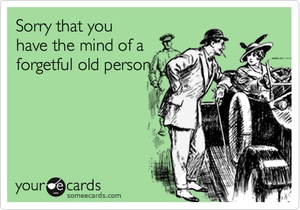
The surest way to get old, is to forget what it was like to be young.
I’ll repeat that just in case you missed it the first time.
The surest way to get old, is to forget what it was like to be young.
I don’t know how much of our forgetting is truly a failure to recall – goodness knows  most of us, at this stage of life, have more than a touch of “CRS” (Can’t Remember Shit), and how much is a deliberate choice not to recall. This is choice results in a peculiar form of amnesia we can all be found guilty of. You watched your parents come down with it, promised yourself it would never happen to you, and yet, here you are—so far long life’s rocky climb to wherever it is you think you’re supposed to be going, that you can’t even remember that fun used to be important—hell, it was everything. In your full speed ahead quest to reach adulthood—and you really were in a hurry weren’t you? You deemed certain behavior childish and unsuitable. And since we have been taught that there is a time and a season for everything under the sun, in the name of being a grown up, one of the first things to be declared out of season and cast aside, is play.
most of us, at this stage of life, have more than a touch of “CRS” (Can’t Remember Shit), and how much is a deliberate choice not to recall. This is choice results in a peculiar form of amnesia we can all be found guilty of. You watched your parents come down with it, promised yourself it would never happen to you, and yet, here you are—so far long life’s rocky climb to wherever it is you think you’re supposed to be going, that you can’t even remember that fun used to be important—hell, it was everything. In your full speed ahead quest to reach adulthood—and you really were in a hurry weren’t you? You deemed certain behavior childish and unsuitable. And since we have been taught that there is a time and a season for everything under the sun, in the name of being a grown up, one of the first things to be declared out of season and cast aside, is play.
Play means doing something simply because it brings you pleasure. No other reason is needed—just plain old fun. There may be some tangential value that comes from  playing, but it’s a by-product and should be considered gravy. So while your workout at the gym may leave you invigorated (or exhausted) and the hour you spent in spinning class makes you feel strong and smug, these activities do NOT equal play. Yes, they are healthful, helpful and undoubtedly important, but they are not to be confused with playing.
playing, but it’s a by-product and should be considered gravy. So while your workout at the gym may leave you invigorated (or exhausted) and the hour you spent in spinning class makes you feel strong and smug, these activities do NOT equal play. Yes, they are healthful, helpful and undoubtedly important, but they are not to be confused with playing.
Just in case you can’t even conjure up a picture of what having fun really looks like, take a gander at any four year old seriously engaged in her most important task—playing. She can be lost in an imaginary scenario involving an ersatz family of dolls for whom she has created specific relationships, and will tell you so in no uncertain terms. “No!! That’s the Mommy not the Big Sister!” She may be moving sand from one pile to another, watching with delight as the grains spill  t
t hrough her hands, repeating the process over and over again. Or she may be running in circles until she’s dizzy with glee and vertigo. It doesn’t matter to her—as long as she gets joy from the experience—and she will.
hrough her hands, repeating the process over and over again. Or she may be running in circles until she’s dizzy with glee and vertigo. It doesn’t matter to her—as long as she gets joy from the experience—and she will.
And because, as a general rule, children play every day, she will wake up the next day anxious to seek and find joy in play once again. Of necessity, as we get older, the amount of time we spend playing diminishes proportionately until we’ve reached the age of presumed maturity— at which point we proudly kick play to the curb permanently, declaring fun a “waste of time.”

This is a BIG MISTAKE. One you are now in a position to correct.
The honest truth is that men are way better at keeping play as a part of their day to  day life than women, and we give them grief for it. Whether it’s golf, poker, fishing or a pick-up game of hoops, we are more likely than not
day life than women, and we give them grief for it. Whether it’s golf, poker, fishing or a pick-up game of hoops, we are more likely than not

to harp on the amount of time they waste being childish– playing silly games or complain about the hours they spend glued to the tube, playing vicariously. How dare they goof-off when there are errands to  be run, gutters to be cleaned, garages (attics, basements, spare rooms) to be cleared, lawns to be mowed? Their “Honey Do” list of chores is relentlessly endless. What immature, childish oafs they are! And what conscientious, hardworking, mature adults we are by comparison.
be run, gutters to be cleaned, garages (attics, basements, spare rooms) to be cleared, lawns to be mowed? Their “Honey Do” list of chores is relentlessly endless. What immature, childish oafs they are! And what conscientious, hardworking, mature adults we are by comparison.
But what if, instead of being indignant at their irresponsible, juvenile behavior, or flexing our passive-agressive (“It’s ok. Go on…play games with your friends. “) muscles, we considered the possibility that maybe, just maybe, there is a little something we could learn from them?
YIKES!
I know, it may sound like sacrilege. I’m probably even in violation of some secret female code of conduct known only, and instinctively, I might add, to the membe rs of the XX Chromosome Club. And I will probably be hunted down like a traitor and forced to cut
rs of the XX Chromosome Club. And I will probably be hunted down like a traitor and forced to cut
up my XXCC membership card for uttering this. Don’t you think it pains me to admit that areas might even exist where women are not equal or superior to the XY Guys?! But I willingly make this sacrifice because I call ‘em like I see ‘em.  When it comes to honoring play- and the spirit of play, the boys win– hands down.
When it comes to honoring play- and the spirit of play, the boys win– hands down.
When is the last time you exhausted yourself having fun instead of worn yourself out with duty or obligation? Can’t remember can you? So what’s a woman to do? Well in the case of the play- challenged chick, the answer is: definitely not what she’s always done. You must accept first that play is not ageist—
OK, I grant you my knees don’t hold up as well during a  kitchen floor game of jacks as they once did. But like with everything else about this getting older business, I’m smart enough to compensate–I don’t play jacks often, a pillow is helpful, I only play for a short time and I’ve even played standing at a table. The point is that I still enjoy jacks so why not play? Of course, there are
kitchen floor game of jacks as they once did. But like with everything else about this getting older business, I’m smart enough to compensate–I don’t play jacks often, a pillow is helpful, I only play for a short time and I’ve even played standing at a table. The point is that I still enjoy jacks so why not play? Of course, there are  other, more mature things I have fun doing as well— going dancing, cooking for friends and sex (Yep!), but I thought my love of jacks, precisely because it’s silly, would offer a better illustration.
other, more mature things I have fun doing as well— going dancing, cooking for friends and sex (Yep!), but I thought my love of jacks, precisely because it’s silly, would offer a better illustration.
The street lights haven’t come on yet, the day isn’t over and your Mom is not waiting at the door for you to come inside (or maybe she is, but that’s an issue for another book.)
There’s still time…but the clock is ticking. It REALLY IS OK to have fun—for no reason and have no guilt about it. You don’t need excuses, or apologies, or to make it look like work in case you get caught. Keep in mind—YOU are the only one who can define what fun is for you.
Homework:
Think back. Way back. No. No. Longer ago than that. Keep going—-until you can  remember what it felt like to be on a swing. Flying and free. You had waited and waited until it was finally your turn. Your braids and the laces of your sneakers were both coming undone. You didn’t care. And when the swing slowed, didn’t you pump as hard as you could to keep aloft?
remember what it felt like to be on a swing. Flying and free. You had waited and waited until it was finally your turn. Your braids and the laces of your sneakers were both coming undone. You didn’t care. And when the swing slowed, didn’t you pump as hard as you could to keep aloft?
Now take that feeling, not the image, the feeling of pure delight, and tuck it somewhere easily accessible (your heart, your brain, your purse—whatever you’re likely to open fastest.)
Done? Are you sure you can grab it at a moment’s notice?
Now each and every week, you must make a play date with yourself, or someone else—as long as it takes you to experience that feeling of delight. So whether it’s a kite, a karaoke machine, a kiln or a kayak, unearth your inner little girl and carpe play!

 When I saw this image posted on the Facebook page Fly, Hip & Ageless the other day, it reminded me of how many of us have lost our way “home;” the way back to the essence of who we are…or were. We’ve been whoever we needed to be, for whomever needed us to be whatever that is (daughter/wife/sister/boss/mother/employee/grandmother/etc.) for so long that we no longer remember who we used to be. Back before the world crept into our sense of self, our dreams and our belief in possibilities and re-shaped who we were…who we might have been.
When I saw this image posted on the Facebook page Fly, Hip & Ageless the other day, it reminded me of how many of us have lost our way “home;” the way back to the essence of who we are…or were. We’ve been whoever we needed to be, for whomever needed us to be whatever that is (daughter/wife/sister/boss/mother/employee/grandmother/etc.) for so long that we no longer remember who we used to be. Back before the world crept into our sense of self, our dreams and our belief in possibilities and re-shaped who we were…who we might have been.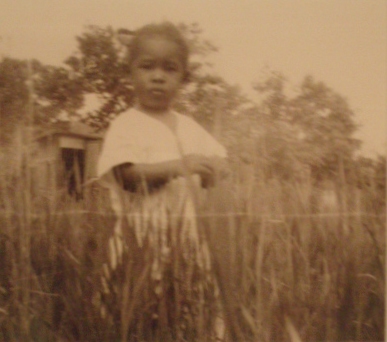



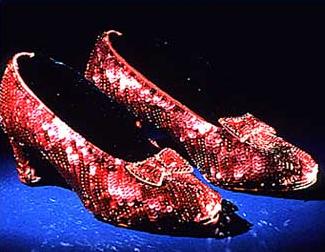


 Ever notice how carefully collectors of old stuff— cars, antiques, books, works of art, treat
Ever notice how carefully collectors of old stuff— cars, antiques, books, works of art, treat  their treasures? Vintage autos are sheltered in temperature controlled environments, their finishes, interior and exterior, are regularly polished and buffed until they gleam. When they do venture out of their protected luxury garages and onto the road, there are special license plates designating them as exceptional and unique, and these classic vehicles are exempted
their treasures? Vintage autos are sheltered in temperature controlled environments, their finishes, interior and exterior, are regularly polished and buffed until they gleam. When they do venture out of their protected luxury garages and onto the road, there are special license plates designating them as exceptional and unique, and these classic vehicles are exempted  from the compliance standards and regulations that apply to newer models. And whether it’s a stately sedan or a racy roadster, these classic cars get noticed. People slow down, take a second or third look and toot their horn or wave as an expression of their admiration—or envy. Sometimes the driver acknowledges the admiring glances with a nod or a casually tossed hand in the air. Other times they continue on their merry way oblivious to everything but their own enjoyment.
from the compliance standards and regulations that apply to newer models. And whether it’s a stately sedan or a racy roadster, these classic cars get noticed. People slow down, take a second or third look and toot their horn or wave as an expression of their admiration—or envy. Sometimes the driver acknowledges the admiring glances with a nod or a casually tossed hand in the air. Other times they continue on their merry way oblivious to everything but their own enjoyment. wheeled treasures. Owners stand around proclaiming the virtues of chamois, sea sponge, sheepskin and wicking towels as the care tools of choice. But whatever they use to clean, dry and polish, they are full of nothing but praise for each other’s gorgeous classic wheels. And between these public displays of affection, the owners of these gems can peruse magazines and websites devoted to these treasured autos.
wheeled treasures. Owners stand around proclaiming the virtues of chamois, sea sponge, sheepskin and wicking towels as the care tools of choice. But whatever they use to clean, dry and polish, they are full of nothing but praise for each other’s gorgeous classic wheels. And between these public displays of affection, the owners of these gems can peruse magazines and websites devoted to these treasured autos. are jewel boxes—purposefully designed and lighted to display their venerable contents to best advantage. No sunlight fades or damages fine woods or upholstery. Lamps cast perfect shadows and highlights to make an item appear imposing, delicate—and most importantly, precious.
are jewel boxes—purposefully designed and lighted to display their venerable contents to best advantage. No sunlight fades or damages fine woods or upholstery. Lamps cast perfect shadows and highlights to make an item appear imposing, delicate—and most importantly, precious. those clever Keno brothers carefully examine the craftsmanship and handiwork of a piece of period furniture? They don special white cotton gloves so as to protect the precious satinwood or walnut finish from even the most imperceptible trace of oil from human skin. The Keno boys
those clever Keno brothers carefully examine the craftsmanship and handiwork of a piece of period furniture? They don special white cotton gloves so as to protect the precious satinwood or walnut finish from even the most imperceptible trace of oil from human skin. The Keno boys  salivate as they oooh! and aaah! while smoothing their gloved hands over inlay, scrollwork, curved legs and of course those amazing claw feet. They exude an almost sexual excitement and tension as they examine the console table or settee, and you can feel it. You’re in your living room, hundreds or even thousands of miles away from the Oklahoma Convention Center or the Peoria-Dome, but your excitement grows right along with theirs. Their saliva
salivate as they oooh! and aaah! while smoothing their gloved hands over inlay, scrollwork, curved legs and of course those amazing claw feet. They exude an almost sexual excitement and tension as they examine the console table or settee, and you can feel it. You’re in your living room, hundreds or even thousands of miles away from the Oklahoma Convention Center or the Peoria-Dome, but your excitement grows right along with theirs. Their saliva  very nearly turns too drool as they turn the table or chest upside down and find original dove tail joints or look at the inside of a drawer and find wood older than the surface, indicating even more specifically a period and style in furniture history. We’re at home holding our breath. Hoping for a huge climax— (a financial one of course) we’ve been teased and toyed with long enough. Then at last, they give us all what we want. The Kenos are gleeful as they tell the now drop-jawed possessor of this mighty treasure the value of the commode/desk/highboy that has been languishing untended and undusted in an attic corner, ever since Great Aunt Gertie (who got the piece from her mother who got it from a neighbor who got it from…) went on to glory.
very nearly turns too drool as they turn the table or chest upside down and find original dove tail joints or look at the inside of a drawer and find wood older than the surface, indicating even more specifically a period and style in furniture history. We’re at home holding our breath. Hoping for a huge climax— (a financial one of course) we’ve been teased and toyed with long enough. Then at last, they give us all what we want. The Kenos are gleeful as they tell the now drop-jawed possessor of this mighty treasure the value of the commode/desk/highboy that has been languishing untended and undusted in an attic corner, ever since Great Aunt Gertie (who got the piece from her mother who got it from a neighbor who got it from…) went on to glory. But back in the real world most of us live in, old sofas and tables are moved to the basement or storage room until-well until they end up donated to charity, left on the curb for the trash collector or carted away by the kindly New Furniture Company that is delivering their shiny replacements.
But back in the real world most of us live in, old sofas and tables are moved to the basement or storage room until-well until they end up donated to charity, left on the curb for the trash collector or carted away by the kindly New Furniture Company that is delivering their shiny replacements. behind the garage. They are left at the mercy of the elements, are subjected to the games of neighborhood children, fall prey to vandals who shatter windows, scratch obscenities on their once lustrous finishes, or become unlikely planters for anything wild enough to take root in the inhospitable old steel. Then they finally rust their way to oblivion.
behind the garage. They are left at the mercy of the elements, are subjected to the games of neighborhood children, fall prey to vandals who shatter windows, scratch obscenities on their once lustrous finishes, or become unlikely planters for anything wild enough to take root in the inhospitable old steel. Then they finally rust their way to oblivion. want. We are all consumers. And we are being marketed to every single minute of every single day. I mean who knew that one day I’d actually WANT a phone in my purse? If someone had told me that twenty years ago, I would have thought the notion absurd. Why on earth would anyone want to carry a telephone around with them? Ludicrous! But now, nearly everyone has a mobile phone in their handbag, pocket, wirelessly hooked up to their car—or worse, their ear—all the time!
want. We are all consumers. And we are being marketed to every single minute of every single day. I mean who knew that one day I’d actually WANT a phone in my purse? If someone had told me that twenty years ago, I would have thought the notion absurd. Why on earth would anyone want to carry a telephone around with them? Ludicrous! But now, nearly everyone has a mobile phone in their handbag, pocket, wirelessly hooked up to their car—or worse, their ear—all the time! Think about this…a 1948 Ford that has been well cared for can be worth much more than a 1998 Mercedes Benz. The fifty years the Ford has on the Benz is not a problem, but rather the thing that makes it worthy. And if you can
Think about this…a 1948 Ford that has been well cared for can be worth much more than a 1998 Mercedes Benz. The fifty years the Ford has on the Benz is not a problem, but rather the thing that makes it worthy. And if you can  authenticate provenance—who owned it when, and for how long—the value of that Ford can go up even more.
authenticate provenance—who owned it when, and for how long—the value of that Ford can go up even more.



 the house—and up the stairs to the second floor, just to see if they could do it. AND because they thought it would be fun. At least that’s how the story went every time Daddy told it, and believe me, he told it dozens of times. Many years later in a house of his own, and with no livestock of the bovine kind readily available, he enticed a semi-willing, fairly gullible squirrel into our back hall and up the stairs, for what must have been the exact same reasons. Why else would he do it? And to the delight of my brother, sister and I, that little fluffy tailed rodent stopped
the house—and up the stairs to the second floor, just to see if they could do it. AND because they thought it would be fun. At least that’s how the story went every time Daddy told it, and believe me, he told it dozens of times. Many years later in a house of his own, and with no livestock of the bovine kind readily available, he enticed a semi-willing, fairly gullible squirrel into our back hall and up the stairs, for what must have been the exact same reasons. Why else would he do it? And to the delight of my brother, sister and I, that little fluffy tailed rodent stopped by often for a visit and a treat (peanuts in the shell). We named him Tony. And sometimes he brought a friend along. Tony (and his descendants) became a regular visitors to our home and when my mom sold the house after my dad passed, she adopted a new squirrel family at her new digs…because it was fun.
by often for a visit and a treat (peanuts in the shell). We named him Tony. And sometimes he brought a friend along. Tony (and his descendants) became a regular visitors to our home and when my mom sold the house after my dad passed, she adopted a new squirrel family at her new digs…because it was fun. contest with my nephew who was then seven or eight, to see who could stuff the most grapes in their mouth. My sister found them sitting on the sofa, cheeks bulging with grapes they weren’t allowed to chew—how else could you keep count and determine the winner?
contest with my nephew who was then seven or eight, to see who could stuff the most grapes in their mouth. My sister found them sitting on the sofa, cheeks bulging with grapes they weren’t allowed to chew—how else could you keep count and determine the winner?
 most of us, at this stage of life, have more than a touch of “CRS” (Can’t Remember Shit), and how much is a deliberate choice not to recall. This is choice results in a peculiar form of amnesia we can all be found guilty of. You watched your parents come down with it, promised yourself it would never happen to you, and yet, here you are—so far long life’s rocky climb to wherever it is you think you’re supposed to be going, that you can’t even remember that fun used to be important—hell, it was everything. In your full speed ahead quest to reach adulthood—and you really were in a hurry weren’t you? You deemed certain behavior childish and unsuitable. And since we have been taught that there is a time and a season for everything under the sun, in the name of being a grown up, one of the first things to be declared out of season and cast aside, is play.
most of us, at this stage of life, have more than a touch of “CRS” (Can’t Remember Shit), and how much is a deliberate choice not to recall. This is choice results in a peculiar form of amnesia we can all be found guilty of. You watched your parents come down with it, promised yourself it would never happen to you, and yet, here you are—so far long life’s rocky climb to wherever it is you think you’re supposed to be going, that you can’t even remember that fun used to be important—hell, it was everything. In your full speed ahead quest to reach adulthood—and you really were in a hurry weren’t you? You deemed certain behavior childish and unsuitable. And since we have been taught that there is a time and a season for everything under the sun, in the name of being a grown up, one of the first things to be declared out of season and cast aside, is play. playing, but it’s a by-product and should be considered gravy. So while your workout at the gym may leave you invigorated (or exhausted) and the hour you spent in spinning class makes you feel strong and smug, these activities do NOT equal play. Yes, they are healthful, helpful and undoubtedly important, but they are not to be confused with playing.
playing, but it’s a by-product and should be considered gravy. So while your workout at the gym may leave you invigorated (or exhausted) and the hour you spent in spinning class makes you feel strong and smug, these activities do NOT equal play. Yes, they are healthful, helpful and undoubtedly important, but they are not to be confused with playing. t
t hrough her hands, repeating the process over and over again. Or she may be running in circles until she’s dizzy with glee and vertigo. It doesn’t matter to her—as long as she gets joy from the experience—and she will.
hrough her hands, repeating the process over and over again. Or she may be running in circles until she’s dizzy with glee and vertigo. It doesn’t matter to her—as long as she gets joy from the experience—and she will.
 day life than women, and we give them grief for it. Whether it’s golf, poker, fishing or a pick-up game of hoops, we are more likely than not
day life than women, and we give them grief for it. Whether it’s golf, poker, fishing or a pick-up game of hoops, we are more likely than not
 be run, gutters to be cleaned, garages (attics, basements, spare rooms) to be cleared, lawns to be mowed? Their “Honey Do” list of chores is relentlessly endless. What immature, childish oafs they are! And what conscientious, hardworking, mature adults we are by comparison.
be run, gutters to be cleaned, garages (attics, basements, spare rooms) to be cleared, lawns to be mowed? Their “Honey Do” list of chores is relentlessly endless. What immature, childish oafs they are! And what conscientious, hardworking, mature adults we are by comparison.
 rs of the XX Chromosome Club. And I will probably be hunted down like a traitor and forced to cut
rs of the XX Chromosome Club. And I will probably be hunted down like a traitor and forced to cut When it comes to honoring play- and the spirit of play, the boys win– hands down.
When it comes to honoring play- and the spirit of play, the boys win– hands down. kitchen floor game of jacks as they once did. But like with everything else about this getting older business, I’m smart enough to compensate–I don’t play jacks often, a pillow is helpful, I only play for a short time and I’ve even played standing at a table. The point is that I still enjoy jacks so why not play? Of course, there are
kitchen floor game of jacks as they once did. But like with everything else about this getting older business, I’m smart enough to compensate–I don’t play jacks often, a pillow is helpful, I only play for a short time and I’ve even played standing at a table. The point is that I still enjoy jacks so why not play? Of course, there are  other, more mature things I have fun doing as well— going dancing, cooking for friends and sex (Yep!), but I thought my love of jacks, precisely because it’s silly, would offer a better illustration.
other, more mature things I have fun doing as well— going dancing, cooking for friends and sex (Yep!), but I thought my love of jacks, precisely because it’s silly, would offer a better illustration.
 remember what it felt like to be on a swing. Flying and free. You had waited and waited until it was finally your turn. Your braids and the laces of your sneakers were both coming undone. You didn’t care. And when the swing slowed, didn’t you pump as hard as you could to keep aloft?
remember what it felt like to be on a swing. Flying and free. You had waited and waited until it was finally your turn. Your braids and the laces of your sneakers were both coming undone. You didn’t care. And when the swing slowed, didn’t you pump as hard as you could to keep aloft?






 was considered the spot that marked the downhill approach to the finish line. Expecting to make it to seventy-five wasn’t an unreasonable presumption if you took good care of yourself, but your best years were, without doubt, long gone—part of the past for you to remember fondly.
was considered the spot that marked the downhill approach to the finish line. Expecting to make it to seventy-five wasn’t an unreasonable presumption if you took good care of yourself, but your best years were, without doubt, long gone—part of the past for you to remember fondly. Now, all it takes is a look at the exponential growth in the number of centennial birthday announcements made on the Today Show (by Willard Scott and continue after his recent retirement) to let us know that living to 100 and beyond is not as much of an anomaly as
Now, all it takes is a look at the exponential growth in the number of centennial birthday announcements made on the Today Show (by Willard Scott and continue after his recent retirement) to let us know that living to 100 and beyond is not as much of an anomaly as it was a scant ten or fifteen years ago. So– thanks to the miracles of modern medicine, as you hit the half century mark, for the first time in recorded human history, (not counting Methuselah and other Biblical ancients) at fifty, you may really, truly, be in middle age…how about that?
it was a scant ten or fifteen years ago. So– thanks to the miracles of modern medicine, as you hit the half century mark, for the first time in recorded human history, (not counting Methuselah and other Biblical ancients) at fifty, you may really, truly, be in middle age…how about that? One of the greatest benefits of having made it through more than a few decades of living, is the gift of perspective. And lucky us, perspective is the kind of gift that keeps on giving. When we put down childish things and begin our journey toward adulthood we don’t know that perspective even exists. We live our lives in the present and the future and we have little, if any, ability (or need) to see the “Big Picture” through the lens of past experience.
One of the greatest benefits of having made it through more than a few decades of living, is the gift of perspective. And lucky us, perspective is the kind of gift that keeps on giving. When we put down childish things and begin our journey toward adulthood we don’t know that perspective even exists. We live our lives in the present and the future and we have little, if any, ability (or need) to see the “Big Picture” through the lens of past experience. ignored the helpful warnings and sage advice and plunged ahead hell-bent on whatever goal we were pursuing. We ignored roadblocks or assumed they were meant for someone else…certainly not “me.” Blindly we stumbled along, bumping into the stuff along our pathway to wherever it was we were going. Sometimes we ran into the obstacles head first, fully expecting that the desire to get where we wanted to go, combined with the sheer force of thrust and our determination, would move the impediment out of our way. Sometimes we were right. More often than not, we were wrong. (Which, by the way, is how our novel Tryin’ to Sleep in the Bed You Made, which is about young people who think they have all the answers, came to be!)
ignored the helpful warnings and sage advice and plunged ahead hell-bent on whatever goal we were pursuing. We ignored roadblocks or assumed they were meant for someone else…certainly not “me.” Blindly we stumbled along, bumping into the stuff along our pathway to wherever it was we were going. Sometimes we ran into the obstacles head first, fully expecting that the desire to get where we wanted to go, combined with the sheer force of thrust and our determination, would move the impediment out of our way. Sometimes we were right. More often than not, we were wrong. (Which, by the way, is how our novel Tryin’ to Sleep in the Bed You Made, which is about young people who think they have all the answers, came to be!) Fortunately, the injuries we receive from collisions with these roadblocks and deterrents are usually minor–not serious enough to cause any permanent disability. After all, when they take place, we are young, resilient, fearless and last but not least, clueless. We are, as were those who went before us, living, breathing object lessons for why phrases like “youth is wasted on the young” and “if I knew then what I know now” will never become obsolete. And when you when you hear these words uttered by a head-shaking, know-it-
Fortunately, the injuries we receive from collisions with these roadblocks and deterrents are usually minor–not serious enough to cause any permanent disability. After all, when they take place, we are young, resilient, fearless and last but not least, clueless. We are, as were those who went before us, living, breathing object lessons for why phrases like “youth is wasted on the young” and “if I knew then what I know now” will never become obsolete. And when you when you hear these words uttered by a head-shaking, know-it- all solidly grown-ass man or woman in response to someone younger making a mistake, you can be pretty sure they have conveniently forgotten to remember their own rocky, pothole-filled path to their current place of wisdom and insight. Because while the gift perspective affords us a view of the whole picture, it can also make micro memories of the dumb stuff we all did.
all solidly grown-ass man or woman in response to someone younger making a mistake, you can be pretty sure they have conveniently forgotten to remember their own rocky, pothole-filled path to their current place of wisdom and insight. Because while the gift perspective affords us a view of the whole picture, it can also make micro memories of the dumb stuff we all did. name! In the twenty plus years I’ve known him, he never has a conversation with me when he didn’t find a reason to reference the good old 70s. These were the years when, according to him, life was great-nearly perfect in fact. But in that chat he said, “I’ve been thinking. And you know how I hate to do that—much less admit that I’m wrong about anything. But…I’ve finally realized that the past wasn’t better.” He took a sip of scotch before he continued. “I was just younger. My life is much better now, way, way better than I wanted to remember it was back then.” He actually looked relieved once he said it out loud, like he was giving himself, permission, finally to let go and live now. His self-revelation did not lost long however and in short order he was back to complaining
name! In the twenty plus years I’ve known him, he never has a conversation with me when he didn’t find a reason to reference the good old 70s. These were the years when, according to him, life was great-nearly perfect in fact. But in that chat he said, “I’ve been thinking. And you know how I hate to do that—much less admit that I’m wrong about anything. But…I’ve finally realized that the past wasn’t better.” He took a sip of scotch before he continued. “I was just younger. My life is much better now, way, way better than I wanted to remember it was back then.” He actually looked relieved once he said it out loud, like he was giving himself, permission, finally to let go and live now. His self-revelation did not lost long however and in short order he was back to complaining about the present and exalting the past.
about the present and exalting the past. believe it or not, might just possibly be even greater than our youth. Victor Hugo said, “Forty is the old age of youth, fifty is the youth of old age.”
believe it or not, might just possibly be even greater than our youth. Victor Hugo said, “Forty is the old age of youth, fifty is the youth of old age.”

 a page or several in your diary. Because let’s face it, pre-Oprah and her “Gratitude Journals” most of us (and many still do) used our journals as a place to vent. We did not use them as a place for saying “Thanks Universe for the good things and for the lessons I’ve learned from the not-so-good things.” Our journals were a place to hold our very own “bitch until it feels better” fests so that we could face the next day relieved of a little bit of our frustration with parents, lovers, jobs, bosses, school, co-
a page or several in your diary. Because let’s face it, pre-Oprah and her “Gratitude Journals” most of us (and many still do) used our journals as a place to vent. We did not use them as a place for saying “Thanks Universe for the good things and for the lessons I’ve learned from the not-so-good things.” Our journals were a place to hold our very own “bitch until it feels better” fests so that we could face the next day relieved of a little bit of our frustration with parents, lovers, jobs, bosses, school, co- workers, friends who “didn’t get it” and the like.
workers, friends who “didn’t get it” and the like.


 My mom, who passed away in 2013 at the age of 89, wasn’t a fancy society lady who lunched at swank restaurants with other fancy society ladies. Juanita made us pressed ham or tuna sandwiches on Wonder Bread for lunch-which we ate at our kitchen table. (In those days kids actually went HOME from school for lunch!)
My mom, who passed away in 2013 at the age of 89, wasn’t a fancy society lady who lunched at swank restaurants with other fancy society ladies. Juanita made us pressed ham or tuna sandwiches on Wonder Bread for lunch-which we ate at our kitchen table. (In those days kids actually went HOME from school for lunch!)  Sometimes, when were out of school and Mom was feeling a bit on the fancy side, she would make us “Eggs ala Goldenrod” for lunch–chopped hard boiled eggs served in a cream sauce over toast points, and my sister, and maybe even my brother, and I would eat in the dining room and feel a little fancy too. But Mom didn’t get facials or manicures or have other fancy beauty rituals.
Sometimes, when were out of school and Mom was feeling a bit on the fancy side, she would make us “Eggs ala Goldenrod” for lunch–chopped hard boiled eggs served in a cream sauce over toast points, and my sister, and maybe even my brother, and I would eat in the dining room and feel a little fancy too. But Mom didn’t get facials or manicures or have other fancy beauty rituals. I mentioned earlier (LESSON 5 – Mirror Mirror) that when my mom was in her early 80’s some fairly debilitating health issues finally slowed her down. But even after months of being house or hospital bound—she rolled her hair every night (but was NEVER seen outside of the house in said rollers) and put on her good robe and lipstick every day because she never stopped being concerned about her appearance.
I mentioned earlier (LESSON 5 – Mirror Mirror) that when my mom was in her early 80’s some fairly debilitating health issues finally slowed her down. But even after months of being house or hospital bound—she rolled her hair every night (but was NEVER seen outside of the house in said rollers) and put on her good robe and lipstick every day because she never stopped being concerned about her appearance.


 watching Mom, somewhere between 4:30 and 5, before my dad got home from work, run a comb through her hair and refresh her lipstick. There was no lip liner or brush or gloss. Just a swipe from
watching Mom, somewhere between 4:30 and 5, before my dad got home from work, run a comb through her hair and refresh her lipstick. There was no lip liner or brush or gloss. Just a swipe from so easily subject to in those days (and perhaps still in these days.) I had not understood when I watched our neighborhood White pharmacist and White shoe repair man, call her “Mrs. DeBerry,” apologize if the prescription or heel replacement wasn’t ready, tell her thank you and to have a nice day- how different that was. I had not understood that my mom’s self-care and the personal dignity that behavior manifested, made people treat her with respect. I had not understood that she was teaching me, by example, (which we all know is the best way to teach anything) that it doesn’t have to be a big thing to make a big difference. It can be something as simple as combing your hair and putting on a little red lipstick.
so easily subject to in those days (and perhaps still in these days.) I had not understood when I watched our neighborhood White pharmacist and White shoe repair man, call her “Mrs. DeBerry,” apologize if the prescription or heel replacement wasn’t ready, tell her thank you and to have a nice day- how different that was. I had not understood that my mom’s self-care and the personal dignity that behavior manifested, made people treat her with respect. I had not understood that she was teaching me, by example, (which we all know is the best way to teach anything) that it doesn’t have to be a big thing to make a big difference. It can be something as simple as combing your hair and putting on a little red lipstick.
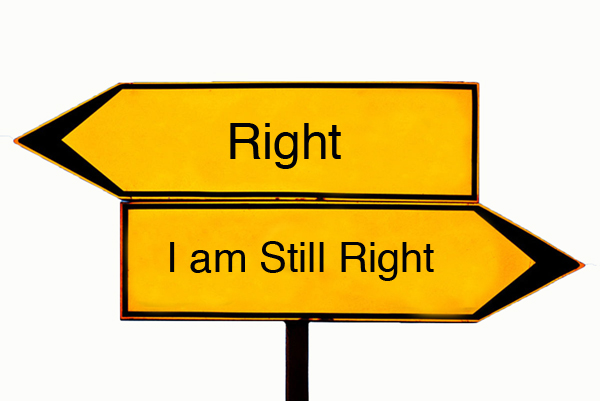
 By the time we are on the approach to midlife we have accumulated quite an extensive collection of rules—most of which we don’t even stop to question. Through repetition and indoctrination we have learned to take many these rules as gospel. Some of these edicts are legitimate, necessary and actually protect us from behavior that can be harmful to ourselves or to others. Following the Ten Commandments
By the time we are on the approach to midlife we have accumulated quite an extensive collection of rules—most of which we don’t even stop to question. Through repetition and indoctrination we have learned to take many these rules as gospel. Some of these edicts are legitimate, necessary and actually protect us from behavior that can be harmful to ourselves or to others. Following the Ten Commandments  and Rule of Law, washing your hands after you use the bathroom (or ride the subway), understanding the rules of the road—including speed limits, “yield,” “pass on the left” and “right” of way are all decrees that keep us safe, healthy and enable us to live with each other in a relatively civilized society. All in all, this is a good thing.
and Rule of Law, washing your hands after you use the bathroom (or ride the subway), understanding the rules of the road—including speed limits, “yield,” “pass on the left” and “right” of way are all decrees that keep us safe, healthy and enable us to live with each other in a relatively civilized society. All in all, this is a good thing. the logic behind them. Rules like the recently done away with, but hard to get out of our heads, “You can’t wear white after Labor Day.”
the logic behind them. Rules like the recently done away with, but hard to get out of our heads, “You can’t wear white after Labor Day.” And I won’t even go into the zealous dogma of wedding etiquette—who pays for what and who sits on which side of the church—what if you’re friends with the bride AND the groom?!
And I won’t even go into the zealous dogma of wedding etiquette—who pays for what and who sits on which side of the church—what if you’re friends with the bride AND the groom?!  inside.” This was to protect the woman’s voluminous dresses and petticoats from dust and muddy splashes sprayed up on the sidewalk from horse drawn carriages passing in the street. Now many urban pedestrians have experienced an unwanted and unpleasant shower from a speeding taxi or car while waiting for the light to change. But sidewalks are much wider than they used to be, we don’t have horses hooves tossing divots into our path and our dresses are, under most normal daily activities, hardly dragging along the sidewalk, but the “rule” still exists. I find myself, if I’m not on my guard, looking at a young couple strolling down the street and wondering “Doesn’t “he” know he’s
inside.” This was to protect the woman’s voluminous dresses and petticoats from dust and muddy splashes sprayed up on the sidewalk from horse drawn carriages passing in the street. Now many urban pedestrians have experienced an unwanted and unpleasant shower from a speeding taxi or car while waiting for the light to change. But sidewalks are much wider than they used to be, we don’t have horses hooves tossing divots into our path and our dresses are, under most normal daily activities, hardly dragging along the sidewalk, but the “rule” still exists. I find myself, if I’m not on my guard, looking at a young couple strolling down the street and wondering “Doesn’t “he” know he’s  “supposed” to walk on the outside?” Duh…
“supposed” to walk on the outside?” Duh…
 preference. The over/under toilet paper roll debate is a good example—the 160,000+ Google entries on the subject notwithstanding. There is no rule or right or wrong here, only what you like, and of course, habit.
preference. The over/under toilet paper roll debate is a good example—the 160,000+ Google entries on the subject notwithstanding. There is no rule or right or wrong here, only what you like, and of course, habit.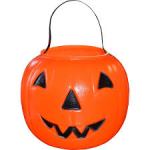 like when a Christmas Eve gift opener marries a Christmas morning opener, or the jack-o-
like when a Christmas Eve gift opener marries a Christmas morning opener, or the jack-o- lantern pumpkin carver decides to take up with the plastic pumpkin picker. Sorting out the “when and if” of breaking our long-held rules and flying in the face of sacred and inviolate family policies is a subjective undertaking and, I have concluded, best left to be negotiated (or duked out) by those who are involved. So you’ll get no advice (or judgment) from me about whether the dressing goes inside or outside the turkey—or for that matter, the semantics of calling it dressing or stuffing.
lantern pumpkin carver decides to take up with the plastic pumpkin picker. Sorting out the “when and if” of breaking our long-held rules and flying in the face of sacred and inviolate family policies is a subjective undertaking and, I have concluded, best left to be negotiated (or duked out) by those who are involved. So you’ll get no advice (or judgment) from me about whether the dressing goes inside or outside the turkey—or for that matter, the semantics of calling it dressing or stuffing. families with steely will and determination— the rules about things we want done in a particular way. This includes everything from declarative statements that start with “We always…” or “I never…” to the way towels are folded, the place we keep our plastic bags and our hair-dos and don’ts. (Which will be addressed in a future Lesson – Hair Story). We don’t even see it happening, but slowly and surely our own rules lead us
families with steely will and determination— the rules about things we want done in a particular way. This includes everything from declarative statements that start with “We always…” or “I never…” to the way towels are folded, the place we keep our plastic bags and our hair-dos and don’ts. (Which will be addressed in a future Lesson – Hair Story). We don’t even see it happening, but slowly and surely our own rules lead us to trade “cute” – not as in “pretty and perky” but as in delightful, adorable (read loveable) and savvy, for being “right.” By then, we are well on our way to shrewdom—a frame of mind that is so totally non-cute.
to trade “cute” – not as in “pretty and perky” but as in delightful, adorable (read loveable) and savvy, for being “right.” By then, we are well on our way to shrewdom—a frame of mind that is so totally non-cute.
 ingredients for the sauce for basting the ham (clearly the secret to such a successful hunk of pig) and then the instructions, which said, “Cut the sides off the ham…” More than a little curious, Val asked Mary the reason for cutting the sides off the ham. Would this somehow allow the hulking haunch to absorb more of the fabulous basting nectar? Was that the secret? “I don’t know, this is the way my Mom made ham,” Mary said. My sister didn’t probe any deeper, and decided she would just use the removed sides to season some green beans or dice and add to a quiche.
ingredients for the sauce for basting the ham (clearly the secret to such a successful hunk of pig) and then the instructions, which said, “Cut the sides off the ham…” More than a little curious, Val asked Mary the reason for cutting the sides off the ham. Would this somehow allow the hulking haunch to absorb more of the fabulous basting nectar? Was that the secret? “I don’t know, this is the way my Mom made ham,” Mary said. My sister didn’t probe any deeper, and decided she would just use the removed sides to season some green beans or dice and add to a quiche. she’d end up wondering why no one else had discovered this seemingly simple step before. Mary continued. “Mom said when she started making the big holiday ham, she didn’t have a pan large enough so that’s how she made the ham fit. I guess I watched her do it, so that’s the way I’ve done it in my house ever since— even though my pan is plenty big.”
she’d end up wondering why no one else had discovered this seemingly simple step before. Mary continued. “Mom said when she started making the big holiday ham, she didn’t have a pan large enough so that’s how she made the ham fit. I guess I watched her do it, so that’s the way I’ve done it in my house ever since— even though my pan is plenty big.” neighbor—in their OWN house) chooses to do the thing differently (read incorrectly). Sometimes we are forced to hold our tongues like with our boss at work or with our neighbors, and we find ourselves secretly stewing in the bubbling juices of our rightness—a decidedly bitter brew. But lucky for us, in our own homes and families, we not only are free to let the wrongdoers know, in no uncertain terms, they have done the thing, whatever it is, incorrectly, we then set about to redo it—“the right way.” Feeling enormous justification and more than a small degree of self-righteousness, we next convince ourselves that it’s really just easier to do it ourselves in
neighbor—in their OWN house) chooses to do the thing differently (read incorrectly). Sometimes we are forced to hold our tongues like with our boss at work or with our neighbors, and we find ourselves secretly stewing in the bubbling juices of our rightness—a decidedly bitter brew. But lucky for us, in our own homes and families, we not only are free to let the wrongdoers know, in no uncertain terms, they have done the thing, whatever it is, incorrectly, we then set about to redo it—“the right way.” Feeling enormous justification and more than a small degree of self-righteousness, we next convince ourselves that it’s really just easier to do it ourselves in  the first place, or we berate the other person for not “getting it.” “How many times do I have to tell you…?”
the first place, or we berate the other person for not “getting it.” “How many times do I have to tell you…?” folded around the fitted sheet and the pillow cases? Obviously, the answer is “No.” Try giving yourself a break from your own rules. Ease up on the need to be RIGHT. You just might like it—and realize that the world didn’t stop spinning on its axis.
folded around the fitted sheet and the pillow cases? Obviously, the answer is “No.” Try giving yourself a break from your own rules. Ease up on the need to be RIGHT. You just might like it—and realize that the world didn’t stop spinning on its axis. of yours, write down five of them on separate pieces of paper. Fold each piece so they are the same size (in quarters, then in half usually works well) and place in a bowl, basket, hat—any container of your choosing.
of yours, write down five of them on separate pieces of paper. Fold each piece so they are the same size (in quarters, then in half usually works well) and place in a bowl, basket, hat—any container of your choosing.


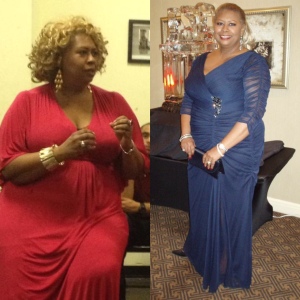




 Let’s face it—the only viable alternative to getting older is not one most of us are interested in. Yes, there’s that icy cryogenic thing,
Let’s face it—the only viable alternative to getting older is not one most of us are interested in. Yes, there’s that icy cryogenic thing,  but other than megalomaniac nutjobs in the movies, who really wants to get stashed in a freezer with the baby peas and cauliflower? So you can be thawed fifty or a few thousand years later like a flash frozen ice age T-Rex and try to pick up where you left off before you decided to try life as a Popsicle? Not me. And I suspect not you.
but other than megalomaniac nutjobs in the movies, who really wants to get stashed in a freezer with the baby peas and cauliflower? So you can be thawed fifty or a few thousand years later like a flash frozen ice age T-Rex and try to pick up where you left off before you decided to try life as a Popsicle? Not me. And I suspect not you. laughing, swear that I know as much about sports as I do about quantum
laughing, swear that I know as much about sports as I do about quantum  mechanics and wait for me to make a fool of myself. But I think the comparison is apt, so I shall plunge ahead, risking ridicule and derision and hope I do know enough about sports to fake my way through this.
mechanics and wait for me to make a fool of myself. But I think the comparison is apt, so I shall plunge ahead, risking ridicule and derision and hope I do know enough about sports to fake my way through this.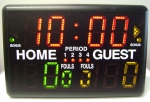 the miraculous ability to stop time. In real life however, we have no such power and must let the clock run—minutes, hours, days, years flying by—whoosh! Never to be seen again. We have no pause, instant replay or measures of time that hang in the air endlessly awaiting our decision to restart the clock.
the miraculous ability to stop time. In real life however, we have no such power and must let the clock run—minutes, hours, days, years flying by—whoosh! Never to be seen again. We have no pause, instant replay or measures of time that hang in the air endlessly awaiting our decision to restart the clock. t, we have to keep on keepin’ on. In addition to the magical “stop action” that occurs in sporting contests, many games also grant the competitors the privilege of a half time. A break right in the middle of the game! It doesn’t matter who’s winning or who’s losing—
t, we have to keep on keepin’ on. In addition to the magical “stop action” that occurs in sporting contests, many games also grant the competitors the privilege of a half time. A break right in the middle of the game! It doesn’t matter who’s winning or who’s losing— Although becoming a centenarian is more and more common these days, I accept that I’m pushing it when I say 50 is the half way mark in the game of life —but since our forties and fifties have long been considered “middle age”, there is plenty of precedent for this argument. So humor me, OK?
Although becoming a centenarian is more and more common these days, I accept that I’m pushing it when I say 50 is the half way mark in the game of life —but since our forties and fifties have long been considered “middle age”, there is plenty of precedent for this argument. So humor me, OK?
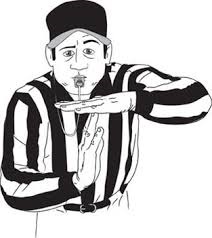
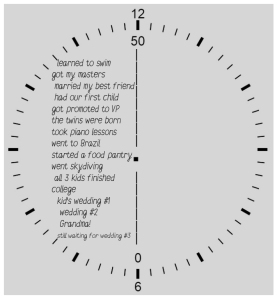


 simply amazed at the transformation, I’m astounded that Susie Schlub, in her sweats or mom jeans, oversize frumpy top (whether she is oversize or not) and sneakers didn’t do something before she was ambushed-or secretly submitted
simply amazed at the transformation, I’m astounded that Susie Schlub, in her sweats or mom jeans, oversize frumpy top (whether she is oversize or not) and sneakers didn’t do something before she was ambushed-or secretly submitted  as “deserving” (which means they’re tired of her looking like hell) by a well-meaning daughter or friend. I am particularly intrigued by the programs that show Ms. Frump actually looking pretty fly at some point in her past. What happened?
as “deserving” (which means they’re tired of her looking like hell) by a well-meaning daughter or friend. I am particularly intrigued by the programs that show Ms. Frump actually looking pretty fly at some point in her past. What happened? didn’t seem to notice that her boobs were taking a nice nap on her waist before the Makeover Magician showed her what a proper bra could do. Is poor tired, tragic, overworked Susie visually challenged? Does she live in a world without mirrors? How could she not know that her hairstyle, which was probably only marginally fashionable in 1982 is hopelessly outdated in the 21st Century?
didn’t seem to notice that her boobs were taking a nice nap on her waist before the Makeover Magician showed her what a proper bra could do. Is poor tired, tragic, overworked Susie visually challenged? Does she live in a world without mirrors? How could she not know that her hairstyle, which was probably only marginally fashionable in 1982 is hopelessly outdated in the 21st Century?

 over heels need a visit to the shoemaker or maybe just to be thrown out? Never mind the help available from fashion magazines, catalogs, stores, TV shows and movies. A plain old mirror—purchased at your local discount store and nailed on the inside of a closet door or even leaned against the wall— would have done the trick. Why oh why didn’t she see herself?
over heels need a visit to the shoemaker or maybe just to be thrown out? Never mind the help available from fashion magazines, catalogs, stores, TV shows and movies. A plain old mirror—purchased at your local discount store and nailed on the inside of a closet door or even leaned against the wall— would have done the trick. Why oh why didn’t she see herself? coiffure and magic makeup. And in the reveal, Voila! We have the modern, refreshed, jazzy— Susie Sharp! We’ve all seen these memorable moments and old Suze looks great! Mostly not the Naomi or Giselle unrealistic/unattainable standard we’ve been taught to compare ourselves too, but so much
coiffure and magic makeup. And in the reveal, Voila! We have the modern, refreshed, jazzy— Susie Sharp! We’ve all seen these memorable moments and old Suze looks great! Mostly not the Naomi or Giselle unrealistic/unattainable standard we’ve been taught to compare ourselves too, but so much  better than before that she’s hardly recognizable to herself. Then Susie breaks down and begins to weep—“I didn’t know I could look like this! Oh! Thank you. Thank you….” Now we’re not talking plastic surgery makeovers here—maybe a little teeth whitening – but the rest is the easy stuff.
better than before that she’s hardly recognizable to herself. Then Susie breaks down and begins to weep—“I didn’t know I could look like this! Oh! Thank you. Thank you….” Now we’re not talking plastic surgery makeovers here—maybe a little teeth whitening – but the rest is the easy stuff. another way. CUTE ALWAYS COUNTS. It counted when you were a baby and your Mom dolled you up. It counted at six when you got that new dress to wear for your birthday party or Easter Sunday. It counted when you were fourteen and hoped “he” noticed how cute you looked in your heather blue box pleated mini skirt and matching knee socks. It counted at twenty five when you were trying to
another way. CUTE ALWAYS COUNTS. It counted when you were a baby and your Mom dolled you up. It counted at six when you got that new dress to wear for your birthday party or Easter Sunday. It counted when you were fourteen and hoped “he” noticed how cute you looked in your heather blue box pleated mini skirt and matching knee socks. It counted at twenty five when you were trying to  impress them on the job. It counted when you planning to say “I do.” It counted when you put on those awful, (pre-Liz Lange stylish maternity-wear) “hatching jackets” with the dumb, sweet Peter Pan collar and bow meant to conceal your baby bump. And CUTE COUNTS now too, you have just forgotten how much.
impress them on the job. It counted when you planning to say “I do.” It counted when you put on those awful, (pre-Liz Lange stylish maternity-wear) “hatching jackets” with the dumb, sweet Peter Pan collar and bow meant to conceal your baby bump. And CUTE COUNTS now too, you have just forgotten how much.



 every single day. My dad, who worked in construction and dressed accordingly, had his Sunday and Friday/Saturday “Up the Street” suits, sports jackets and tuxedoes tailor made. As a girl, I remember going to Charlie Baker Clothier with him to look at fabric swatches and pick out buttons—because all of it mattered. Now back to my mom. In her early 80’s she brought quite unexpectedly to a halt by some fairly debilitating health issues. Even after months of being house or hospital bound—she rolled her hair every night and put on her good
every single day. My dad, who worked in construction and dressed accordingly, had his Sunday and Friday/Saturday “Up the Street” suits, sports jackets and tuxedoes tailor made. As a girl, I remember going to Charlie Baker Clothier with him to look at fabric swatches and pick out buttons—because all of it mattered. Now back to my mom. In her early 80’s she brought quite unexpectedly to a halt by some fairly debilitating health issues. Even after months of being house or hospital bound—she rolled her hair every night and put on her good





 between teenage trashy—oops! I mean teenage trendy, and resignation retirement rags. No you can’t dress like your fifteen year old daughter or the twenty-three year old hostess at your favorite restaurant, but even without belly baring shirts (no navel piercing please) and low rise pants (I also suggest that you pass on the above-the-crack, tramp-stamp tattoo) BELIEVE ME, you can stay hot—or get hot for the first time!
between teenage trashy—oops! I mean teenage trendy, and resignation retirement rags. No you can’t dress like your fifteen year old daughter or the twenty-three year old hostess at your favorite restaurant, but even without belly baring shirts (no navel piercing please) and low rise pants (I also suggest that you pass on the above-the-crack, tramp-stamp tattoo) BELIEVE ME, you can stay hot—or get hot for the first time!


 Like the Harpies of mythology, she is fierce, bad-tempered and relentless. She’s the one who makes you wonder if you’re good enough. By now her nagging little voice has been whispering bits and pieces of self doubt into your psychic ear for decades, so long in fact, that at this juncture it seems like harmless white noise—you aren’t even aware of her presence any more. But she’s anything but harmless and she needs to go. Now.
Like the Harpies of mythology, she is fierce, bad-tempered and relentless. She’s the one who makes you wonder if you’re good enough. By now her nagging little voice has been whispering bits and pieces of self doubt into your psychic ear for decades, so long in fact, that at this juncture it seems like harmless white noise—you aren’t even aware of her presence any more. But she’s anything but harmless and she needs to go. Now. first words back when you were a little girl and she was just a little Harpy in Training (H.I.T.). You hadn’t begun to “develop” yet—as they used to say, much less develop any anti-Harpy skills. So she went to work on your young, defenseless, happy little self. “How
first words back when you were a little girl and she was just a little Harpy in Training (H.I.T.). You hadn’t begun to “develop” yet—as they used to say, much less develop any anti-Harpy skills. So she went to work on your young, defenseless, happy little self. “How  come you don’t have a Barbie book bag?” (Translation: The CUTE girls all have Barbie book bags while you have the practical blue one your mother insisted would last a couple of years.) “Why don’t you have streamers on your bike?” (Translation: But even if you get streamers what if
come you don’t have a Barbie book bag?” (Translation: The CUTE girls all have Barbie book bags while you have the practical blue one your mother insisted would last a couple of years.) “Why don’t you have streamers on your bike?” (Translation: But even if you get streamers what if  they’re not the right color?)
they’re not the right color?)  “Only a B in geography?” (Translation: Not quite as smart as Melissa huh?) “If you could jump higher you would have made the volleyball team.” (Translation: You’re too tall/short/fat/awkward— what ever gave you the idea you could be an athlete?)
“Only a B in geography?” (Translation: Not quite as smart as Melissa huh?) “If you could jump higher you would have made the volleyball team.” (Translation: You’re too tall/short/fat/awkward— what ever gave you the idea you could be an athlete?)
 And so the plague begins. Its most telling symptom is unconscious comparison—almost always to other women. We compare ourselves to our friends, sisters, mothers, cousins, co-workers, neighbors, strangers, bosses, movie stars, and sadly even to our daughters. Sometimes we know we’re doing it, but mostly we’re unaware of how many times a day we think of ourselves in terms of how we measure up to someone else, or someone else’s expectations. Those expectations are, more often than not, a presumption on our part—
And so the plague begins. Its most telling symptom is unconscious comparison—almost always to other women. We compare ourselves to our friends, sisters, mothers, cousins, co-workers, neighbors, strangers, bosses, movie stars, and sadly even to our daughters. Sometimes we know we’re doing it, but mostly we’re unaware of how many times a day we think of ourselves in terms of how we measure up to someone else, or someone else’s expectations. Those expectations are, more often than not, a presumption on our part— because if we don’t think we’re good enough, how can anyone else possibly miss the bright flashing neon marquee on our forehead announcing our long list of shortcomings to all the world? Believe me, despite the fact that it blinds YOU nearly every time you look at yourself, THEY don’t see it until you point it out. Why? Because they’re far too busy worrying if you are scrutinizing their list of personal inadequacies.
because if we don’t think we’re good enough, how can anyone else possibly miss the bright flashing neon marquee on our forehead announcing our long list of shortcomings to all the world? Believe me, despite the fact that it blinds YOU nearly every time you look at yourself, THEY don’t see it until you point it out. Why? Because they’re far too busy worrying if you are scrutinizing their list of personal inadequacies.
